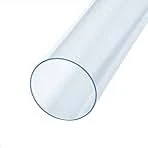Dec . 10, 2024 16:58 Back to list
perforated hdpe pipe
The Benefits of Perforated HDPE Pipe in Modern Drainage Systems
Perforated High-Density Polyethylene (HDPE) pipe is increasingly recognized as a pivotal component in modern drainage systems, offering numerous advantages over conventional piping materials. Designed with a series of holes along its length, perforated HDPE pipe facilitates the efficient collection and transport of water, making it especially valuable in agricultural, drainage, and environmental applications. This article explores the key features and benefits of perforated HDPE pipes, highlighting their relevance to contemporary drainage solutions.
Understanding Perforated HDPE Pipe
Perforated HDPE pipes are specifically engineered to allow for the infiltration of water while simultaneously maintaining structural integrity. The perforations in the pipe enable groundwater and surface water to enter the drainage system, reducing the risk of flooding, soil erosion, and waterlogging. Made from high-density polyethylene, these pipes boast outstanding resistance to corrosion, chemicals, and UV light, ensuring durability and long service life.
Advantages of Perforated HDPE Pipe
1. Effective Drainage Solutions The primary advantage of perforated HDPE pipe is its ability to manage excess water efficiently. Whether used in agricultural applications to drain fields or in civil engineering projects to alleviate groundwater pressure, these pipes help maintain optimal moisture levels, enhancing crop yields and preventing structural damage.
2. Lightweight and Easy to Handle Compared to traditional material options like concrete or metal, HDPE pipes are significantly lighter, making them easier to transport, handle, and install. This lightweight nature reduces labor costs and installation time, facilitating quick project completion.
perforated hdpe pipe

3. Flexibility and Adaptability Perforated HDPE pipes are available in various diameters and perforation patterns, allowing for customized solutions tailored to specific drainage needs. This adaptability ensures they can be integrated seamlessly into various systems, from agricultural irrigation to municipal stormwater management.
4. Resistance to Environmental Factors The robust construction of HDPE pipes means they are resistant to a wide range of environmental stresses, including soil chemicals and changing temperatures. This resistance translates to reduced maintenance costs and a longer lifespan, making them a cost-effective choice for many applications.
5. Sustainability As sustainability becomes a focal point in construction and landscaping projects, the use of perforated HDPE pipes is gaining traction. HDPE is a recyclable material, and its longevity helps minimize waste in the long term. Additionally, efficient water management using these pipes contributes to conservation efforts by maximizing the use of available water resources.
Applications of Perforated HDPE Pipe
The versatility of perforated HDPE pipes enables their use in a wide array of applications. In agriculture, they are often employed in subsurface drainage systems to control soil moisture levels, enhancing crop health and productivity. In urban settings, these pipes are essential for stormwater management systems, allowing for the effective routing of runoff and reducing the likelihood of urban flooding. They also play a vital role in leachate collection systems in landfills, helping to manage environmental impacts.
Conclusion
Perforated HDPE pipe has emerged as an essential tool in modern drainage systems, combining functionality, durability, and sustainability. Its effective drainage capabilities, lightweight nature, and resistance to environmental factors make it an ideal choice for various applications, from agriculture to urban infrastructure. As the demand for efficient and sustainable water management solutions continues to rise, perforated HDPE pipe is sure to remain at the forefront of advancements in drainage technology. Adopting this innovative approach can lead to healthier ecosystems, improved agricultural practices, and more resilient urban landscapes.
-
HDPE Steel Belt Reinforced Spiral Corrugated Pipe | High Strength
NewsAug.17,2025
-
HDPE Pipe Fittings: Durable, Leak-Proof Solutions
NewsAug.16,2025
-
Premium CPVC Sheet: High-Temp & Chemical Resistant Solutions
NewsAug.15,2025
-
Durable PPR Pipe for Hot & Cold Water Systems - Easy Install
NewsAug.14,2025
-
Durable HDPE Sheet | Versatile & Impact-Resistant Plastic
NewsAug.13,2025
-
Premium PVC Soft Sheets: Clear, Flexible & Durable
NewsAug.12,2025

